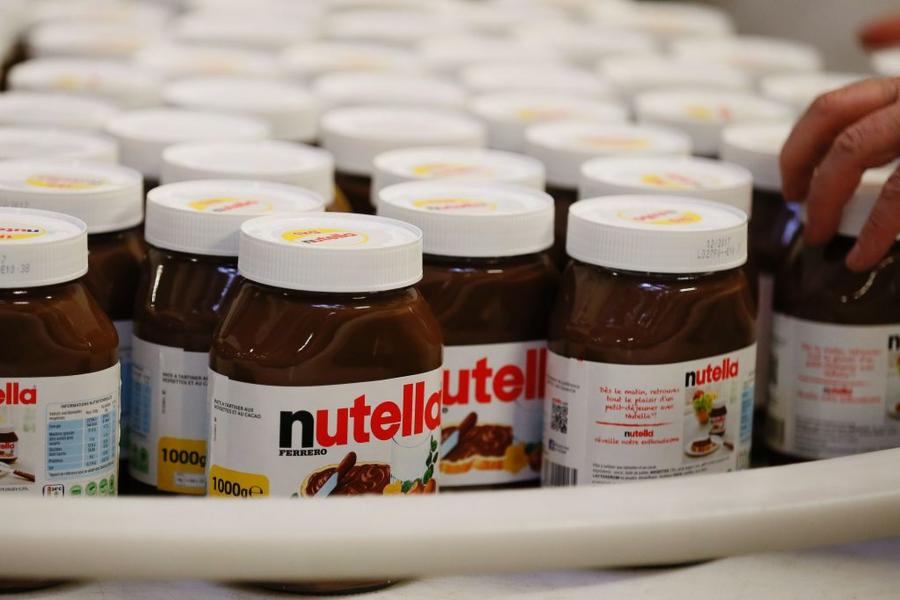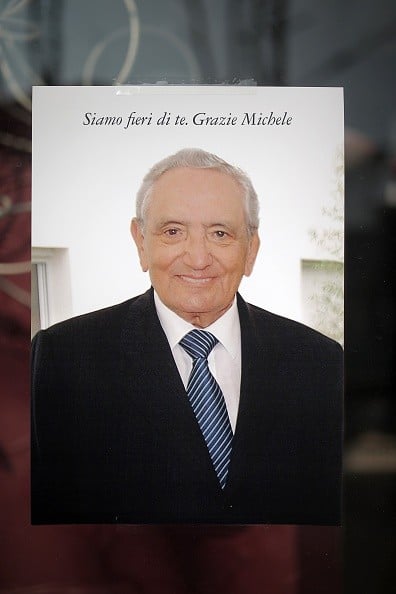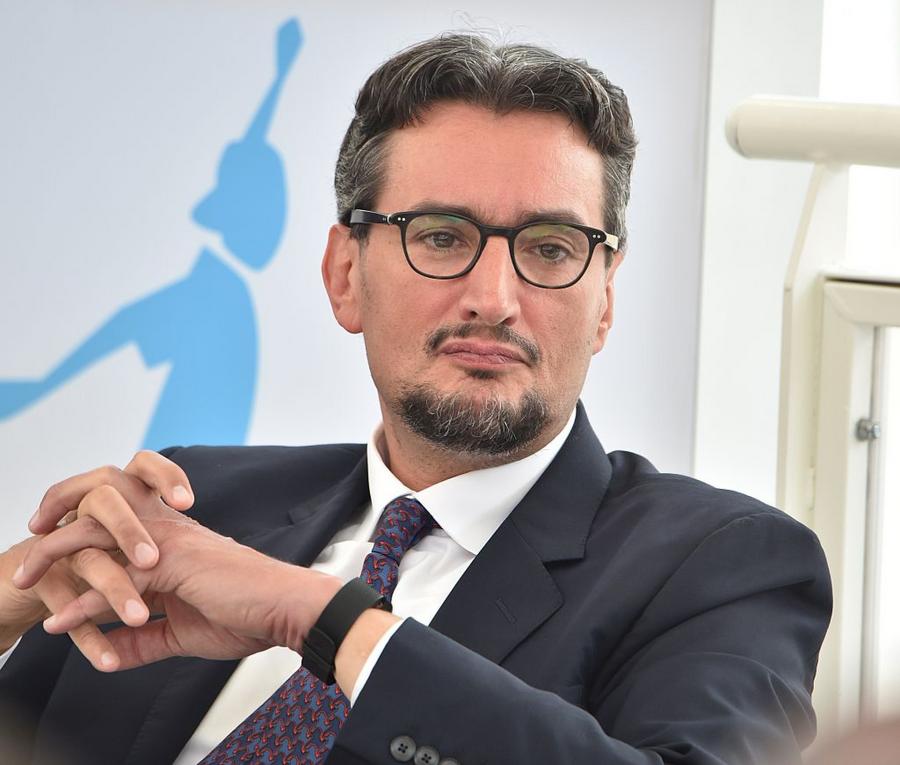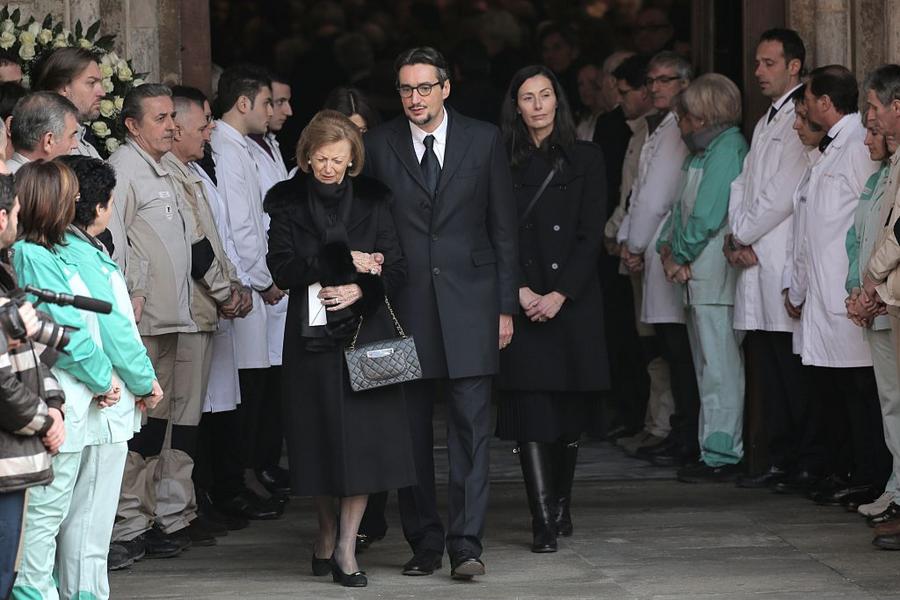With a net worth of $55 billion, Giovanni Ferrero is the richest person in Italy by a mile. He leads the next billionaire by a margin of $30 billion. How do you think Giovanni earned his fortune? And actually, he technically inherited his fortune from his father. So, how do you think Giovanni's late father, Michele Ferrero, earned what has been the largest private fortune in Italy for several decades?
Did he invent the Ferrari? Haha—obviously not. That was Enzo Ferrari. Today, Enzo's son Piero Ferrari is Italy's fifth-richest person. And here's a fun fact about Piero: Divorce was illegal in Italy through the 1970s. Piero was born in 1945, not to Enzo's wife, but to his mistress. Therefore, Piero's legal right to his family name and inheritance could not be officially bestowed until after Enzo's wife died in 1978, when Piero was 33! Today, Piero owns 10% of the publicly traded Ferrari (ticker symbol "RACE"), and that stake gives him a net worth of around $10 billion.
Giovanni Ferrero and Piero Ferrari have a lot in common. They have similar last names. They both have siblings who died unexpectedly at young ages. They both inherited their fortunes from their father. And both of their last names ARE the business. Except, instead of making gorgeous supercars, Giovanni's family business makes delicious candies.
Perhaps you've heard of Ferrero Rocher? Or maybe the confectionery's other brands, Kinder and Tic Tac? But here's another twist: The entire Ferrero empire, one that generated Italy's largest private fortune, began with a humble product created during World War II as a response to rationing and scarcity. That product was called Nutella.

(CHARLY TRIBALLEAU/AFP/Getty Images)
From Family Shop To Factory Empire
It all began in a small pastry shop in the town of Alba, tucked in the rolling hills of Italy's Piedmont region. During the final years of World War II, Italy was battered, poor, and hungry. Sugar and cocoa were luxuries. For a local baker named Pietro Ferrero, trying to keep his business alive meant improvisation.
Pietro had grown up surrounded by hazelnut trees, which covered the Piedmont countryside. With cocoa scarce and expensive, he decided to grind the local hazelnuts into a paste and mix them with what little cocoa he could find. The result was a dense, sweet loaf called Pasta Gianduja — part chocolate, part hazelnut, and entirely born from necessity. It came wrapped in foil and was meant to be sliced and spread on bread. For Italians emerging from years of war and rationing, it was a revelation.
Word spread quickly through the villages. Mothers packed slices of the hazelnut loaf into their children's lunches. Shopkeepers couldn't keep it on shelves. Pietro and his brother Giovanni soon formalized their operation, founding a company called Ferrero SpA and opening a small factory in Alba. Giovanni focused on distribution, building an efficient network that helped turn the family's modest pastry shop into a real business.
In 1949, tragedy struck when Pietro Ferrero died suddenly, leaving behind his young son Michele, who was just 24 years old.
The Reluctant Heir
When Michele Ferrero took over his late father's company, Italy was still rebuilding from the war. He wasn't a trained businessman and didn't have a college degree. What he did have was a relentless curiosity and a deep sense of duty. His father's invention had already captured local hearts; Michele wanted to refine it and share it with the world.
By the early 1960s, Michele had revisited his father's original formula, adjusting the ratio of sugar to cocoa and grinding the hazelnuts to a smoother consistency. In 1964, he rebranded the product under a new name: Nutella. Within months, it was flying off grocery shelves across Europe.
The Relentless Innovator
Once Nutella took off, Michele Ferrero became obsessed with the art and science of confectionery. He wasn't content to have one hit product — he wanted an entire lineup of beloved sweets. Under his leadership, Ferrero introduced "Kinder Chocolate" in 1968, the breath mint "Tic Tac" in 1969, and the golden-wrapped "Ferrero Rocher" pralines in 1982. Each product was the result of years of tinkering and testing.
Michele's perfectionism bordered on legendary. He often worked through the night with his closest team of chemists and tasters, experimenting with texture, aroma, and sweetness ratios until every detail met his standards. Even after Ferrero grew into one of the largest chocolate companies in Europe, he insisted on personally approving every major recipe.
His quiet obsession worked. By the 1970s, Nutella had become a breakfast staple in Europe. By the 1980s, Ferrero candies were sold on five continents. The company's success wasn't just a triumph of marketing — it was built on taste, precision, and consistency.
The Monk Of Chocolate
Despite his wealth and power, Michele Ferrero lived like a man detached from material luxury. He never gave interviews. He declined public awards. He avoided politics and the press entirely. A devout Catholic, he attended Mass daily, made annual pilgrimages to Lourdes, and required every Ferrero factory in the world to have a statue of the Virgin Mary.
Those who worked for him described Michele as kind but exacting. He was known to remember employees by name, to ask after their families, and to quietly provide financial help when someone was struggling. He considered the company's workforce part of his extended family.
That wasn't just rhetoric. Ferrero employees were offered free health care, organized company vacations, and reliable bus transportation from the surrounding villages to the Alba factory. At annual gatherings, workers would sing a song in dialect thanking "Monsù Michele" — "Mister Michele" — for their livelihoods.
He once wrote a letter to his staff that summed up his philosophy:
"I pledge myself to devote all my activities and efforts to this company. I shall only feel satisfied when I have managed, with concrete results, to guarantee you and your children a safe and tranquil future."
It wasn't just talk. In more than half a century, Ferrero's Italian employees never went on strike.
Faith, Family, And Secrecy
As the company grew, Michele became increasingly protective of its inner workings. He refused to take Ferrero public and insisted on keeping product formulas secret. The recipe for Nutella, for instance, is guarded as tightly as Coca-Cola's. Prospective executives were rumored to be observed through a two-way mirror before being interviewed face-to-face.
The secrecy extended to his personal life. During Italy's turbulent 1970s, when kidnappings of wealthy industrialists by radical groups like the Red Brigades were common, Michele quietly moved his family to Monaco for safety. From there, he commuted to the Alba headquarters by helicopter, often flying in unannounced to taste new products or review operations firsthand.
In 1962, Michele married Maria Franca Fissolo, a fellow Piedmont native who shared his faith and humility. The couple had two sons, Pietro and Giovanni, both of whom joined the family business as adults. Like their father and grandfather before them, they were raised to view Ferrero not as a corporation, but as a duty.
Even a decade after his death, only a few photos of Michele exist on the internet. Here is the sole photo of Michele on Getty Images; the writing at the top says "We are proud of you. Thanks Michele"

(MARCO BERTORELLO /AFP)
Tragedy And Transition
In 1997, Michele formally passed day-to-day control of Ferrero SpA to his two sons, Pietro and Giovanni, while he continued to oversee the company's strategic direction. The transition appeared smooth — until tragedy struck in 2011.
While cycling in South Africa, Michele's eldest son Pietro suffered a fatal heart attack. He was 47. The loss devastated the family and shook the company's leadership. Michele, then in his mid-80s, returned to a more active role for a time, before his health began to decline.
Michele Ferrero died on February 14, 2015, at the age of 89. He left behind his wife, Maria Franca, and his surviving son, Giovanni, who inherited control of the Ferrero Group.

Giovanni Ferrero (GIUSEPPE CACACE/AFP via Getty Images)
The Empire Endures
Under Giovanni's leadership, the Ferrero empire has continued to expand. The company now operates in more than 170 countries, employs over 40,000 people, and generates more than $19 billion in annual revenue. In 2018, Ferrero made its boldest move yet — purchasing Nestlé's entire U.S. candy division for $2.8 billion, bringing "Butterfinger," "Crunch," and "Baby Ruth" under the Ferrero umbrella.
Giovanni, like his father, has maintained the company's private structure and low profile. Ferrero remains a family-owned business headquartered in Alba, still known for its loyalty, secrecy, and consistent quality.

Maria and Giovanni at Michele's funeral (MARCO BERTORELLO/AFP/Getty Images)
Legacy Of A Quiet Billionaire
When Michele Ferrero died, he was the richest man in Italy, with a fortune estimated at roughly $26 billion. Yet he never seemed to care about money. His legacy wasn't luxury yachts or flashy estates — it was the enduring culture of kindness and excellence he built.
He transformed a wartime improvisation into one of the most beloved brands on the planet. He expanded a family bakery into a global powerhouse without ever compromising on privacy, humility, or faith. And he created a company that treats its workers as partners in success — a rarity in modern capitalism.
In his lifetime, Michele Ferrero helped make "Nutella" a household word and "Ferrero Rocher" a global symbol of elegance. He was, by every measure, a titan of industry — yet he remained guided by the same values that shaped him in postwar Piedmont: simplicity, faith, and devotion to family.
/2015/04/Maria-Franca-Ferrero.jpg)
/2019/11/Giovanni-Ferrero.jpg)
/2020/08/GettyImages-493589996.jpg)
/2009/09/karl.png)
/2018/09/jaqueline.png)
/2013/09/harold-alfond.jpg)
/2019/10/denzel-washington-1.jpg)
/2009/09/Brad-Pitt.jpg)
:strip_exif()/2015/09/GettyImages-476575299.jpg)
/2017/02/GettyImages-528215436.jpg)
/2018/03/GettyImages-821622848.jpg)
:strip_exif()/2009/09/P-Diddy.jpg)
/2019/11/GettyImages-1094653148.jpg)
/2020/04/Megan-Fox.jpg)
/2020/01/lopez3.jpg)
/2019/04/rr.jpg)
/2009/09/Jennifer-Aniston.jpg)
/2009/11/George-Clooney.jpg)
/2020/02/Angelina-Jolie.png)
/2009/09/Cristiano-Ronaldo.jpg)
/2020/06/taylor.png)